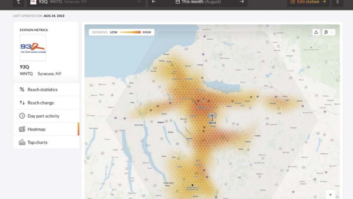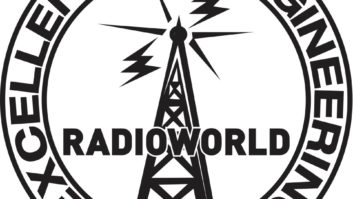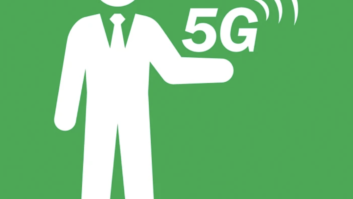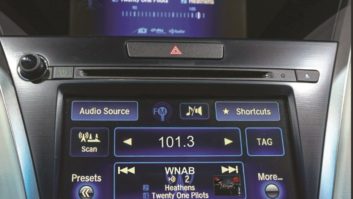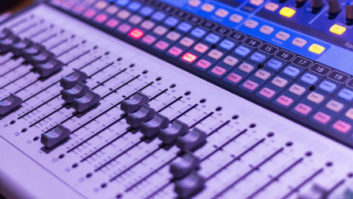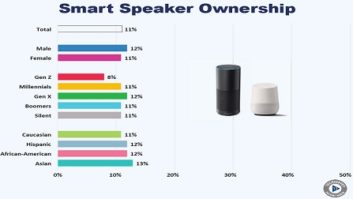
For as long as any of us can remember, there has been a love affair between cars and radio. AM/FM was the sole source of information and entertainment for drivers, and car radios, quite simply, were never turned off.
Think of it: you shut off the ignition, but not the radio, and it came back on as soon as you fired the engine again. The only race was between broadcasters, fighting for presets.
Everyone won — automakers and their suppliers by providing more value to their customers, broadcasters who made an outsized portion of their revenues from in-car listening and consumers who voted with their ears and loved what they heard.
Bill Burton, the legendary Detroit radio ad man, had a great expression for this mutually beneficial relationship. He said, “An automobile is a radio with four wheels.” Fabulous line, Bill.
A few years ago on a family car trip, it struck me that this decade’s old truism no longer applied. My wife, five kids and I were driving to a vacation spot in western Maryland. Two of the kids were watching Sponge Bob on the DVD, which I was forced to listen to. Two were playing their Nintendo DS game devices. One was listening to his iPod. My wife didn’t want to hear Sponge Bob, so she was listening to a book on tape.
At one point I thought, my goodness, there are seven consumers stuck in this car for three hours, and the radio has not been turned on. Ten years earlier, it would have been all there was to do. And this was prior to widespread mobile e-mail, texting and Web surfing, offering even more choices in the auto.
There is a reason Ford’s CEO Alan Mulally will keynote again at this year’s Consumer Electronics Show. And why most automakers and their Tier One suppliers will be there, with booths or walking the CES floor. It’s because the modern car has become a virtual consumer electronics playground, and CES has grown almost as important to car makers as the Detroit Auto Show.
Think of the CE devices that are routinely built into today’s cars — I’m talking factory installed for the masses, not “pimp your ride” aftermarket stuff. Killer audio systems with multiple sources — AM/FM, Sirius XM, CD as well as USB and iPod connectivity. DVD video and gaming jacks for the rear seats. Navigation systems with real-time traffic updates. Bluetooth for safer mobile phone connectivity. Concierge and safety services like OnStar. And now mobile Internet connectivity. Voice activated everything. Coming soon: mobile television and true mobile broadband. And of course there are the standalone CE devices now routinely used in cars — mobile phones, gaming devices, MP3 players.
So what would Bill Burton’s expression be now? An automobile is a what with four wheels? A computer? An office? A game room? Being a geek, I’d call it a mobile infotainment center.
AM/FM remains fundamental
Don’t get me wrong, AM/FM is still a fundamental part of the driving experience. Every car sold in this country comes with a radio, positioned square in the middle of some of the world’s most valuable real estate: the car dashboard. But the days of AM/FM’s monopoly hold on auto infotainment are long gone.
AM/FM can no longer take for granted that it will be automatically built into cars, or that it will be used by drivers. No, radio has to fight for its position in the dash. The green flag has been waved in this race, and after starting in the pole position, radio is no longer leading the pack.
To mix my metaphors, this race will be run on two fronts.
First, to keep listeners interested in the car, radio broadcasters have to keep doing what they always have done, but do it better than they have ever done: create compelling programming, address the local tastes and needs of their audience, and promote their product like crazy.
But second, to meet the heightened demands of today’s digital consumers, AM/FM has to offer more of what listeners have come to expect in a digital world: higher audio quality to take advantage of those great audio systems, more diverse content to compete with all those other choices listeners have, and more applications and interactivity to provide consumers additional value.
HD Radio technology is a new engine that can supercharge broadcaster efforts in this critical race — a digital broadcast pipe to consumers in their cars.
By improving audio quality — digital FM sounds like a CD and digital AM sounds like full stereo analog FM — HD Radio broadcasts allow listeners to experience AM/FM in the same high quality as their other digital audio sources.
With HD2 and HD3 channels, broadcasters are providing a diverse new set of programming choices to compete with all those other digital options. The progress on HD2 and HD3 channels has been accelerating, with nearly 1,100 new channels on the air.
Sports franchises like the Cowboys, Yankees, Penguins and Mets have multicast offerings. Religious (Mormon Channel), ethnic (WorldBand’s HumDesi Southern Asian language programming) and lifestyle (Pride Channel) broadcasters bring new local and national offerings. And there are targeted local niche offerings: Boston’s Irish Channel, DC’s Bluegrass Country, Miami’s Dance to name just a few.
Continued Progress in Cars HD Radio Technology’s rollout in cars continues impressively, as shown on the accompanying chart. A short while ago, HD Radio technology was available on BMW and Mini vehicles, and only as a standalone option. Now 15 different automakers are offering or have announced plans to offer HD Radio receivers factory installed in their cars.
(click thumbnail) Luxury automakers like BMW and Mercedes, lower priced lines like Kia and Scion, as well as European, Asian and now the strongest American automaker, Ford, are on board. These manufacturers will offer HD Radio receivers in 80 different vehicle lines.
And not only are more automakers offering the product, more consumers are taking it, as we move from a standalone option to having HD Radio technology included in option packages or, in the best case, being offered as standard equipment: HD Radio technology will be standard on 36 different vehicle lines. HD Radio factory auto sales have soared, and we expect significant additional launch announcements soon.
— Bob Struble And advanced HD Radio applications are finding their way into cars, providing consumers with more value from AM/FM broadcasts. Those walking the CES floor in Vegas will get a sneak preview.
Image support next hot app
CES attendees will see real-time traffic data, as well as other valuable info like gas prices, movie times and local points of interest, broadcast over HD Radio bandwidth to navigation systems in cars. The higher bandwidth rates, local customization and favorable economics make traffic services over HD Radio bandwidth compelling compared to other services like satellite radio.
Two nationwide networks are already built out — one by Clear Channel, the other by Navteq working with a group of broadcasters in the Broadcast Traffic Consortium — so the infrastructure is in place. Consumer devices in the aftermarket and factory installed in vehicles, as will be shown at CES, will complete the service.
Also prominent on the show floor will be iTunes Tagging. This service, enabling a listener to press a button and capture song information for later purchase at the iTunes store, is an ideal app for cars. Better to push a button to remember to buy a song than to fumble for a pen and drive into a tree. Car buyers will see factory installed iTunes Tagging in cars in 2010.
And showgoers will see what I predict will be the next hot HD Radio application in cars: Image Support.
This is the ability to broadcast pictures from an HD Radio station and display them on a radio screen. The initial application will be album art, which our research shows consumers will love and increasingly expect, and car manufacturers are enthusiastic about. Station branding and advertiser-generated images will also be in the mix. This app will increase the value of HD Radio broadcasts to listeners, and like all other HD Radio apps, lead to new revenue opportunities for broadcasters.
In January, shortly after the CES concludes, Ford will begin offering HD Radio technology factory installed in their cars. When Alan Mulally addresses CES, he will lay out his compelling vision and plan to take Ford to the forefront of automotive consumer electronics, building on its highly successful Sync platform. That HD Radio technology is an important part of this vision is great news for broadcasters and consumers alike, and demonstrates convincingly the importance of digital technology for radio broadcasters.
So the digital race for the dashboard is in full swing. Radio broadcasters have always had the pole position, but have slipped back by driving with old technology. We at iBiquity are committed to be in the garage developing better radio engines and in the pit crew, helping fuel radio’s run. Together, we can work to get that checkered flag.
The author is president/CEO of iBiquity Digital Corp.
Contact the author at[email protected]. Radio World welcomes other points of view at[email protected].






